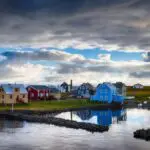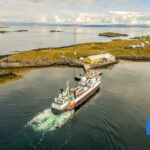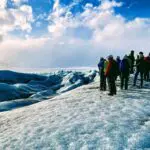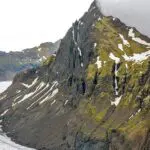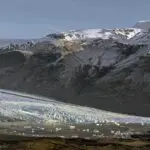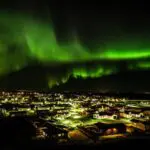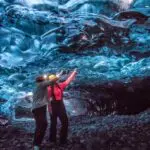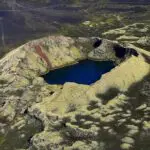You don’t have to go far to enjoy Icelandic nature, as there are many nature reserves and parks in Reykjavik. If you are here only for a few days, there’s no need to miss out on Iceland’s nature and checking out one or more of the beautiful parks in Reykjavik is a great way to experience the city on a different level.
And the best part about this is that it is all free!
Öskjuhlíð
Öskjuhlíð is a unique outdoor area in the vicinity of the city center with diverse nature and interesting historical monuments.
Öskjuhlíði is unique and probably the open area in Reykjavik that is known to most people. It is a 61-meter-high, rocky hill that juts out over its immediate surroundings, including downtown Reykjavik. At the top of the hill are six hot water tanks, most of which still play an essential role in storing hot water for the people of Reykjavik.
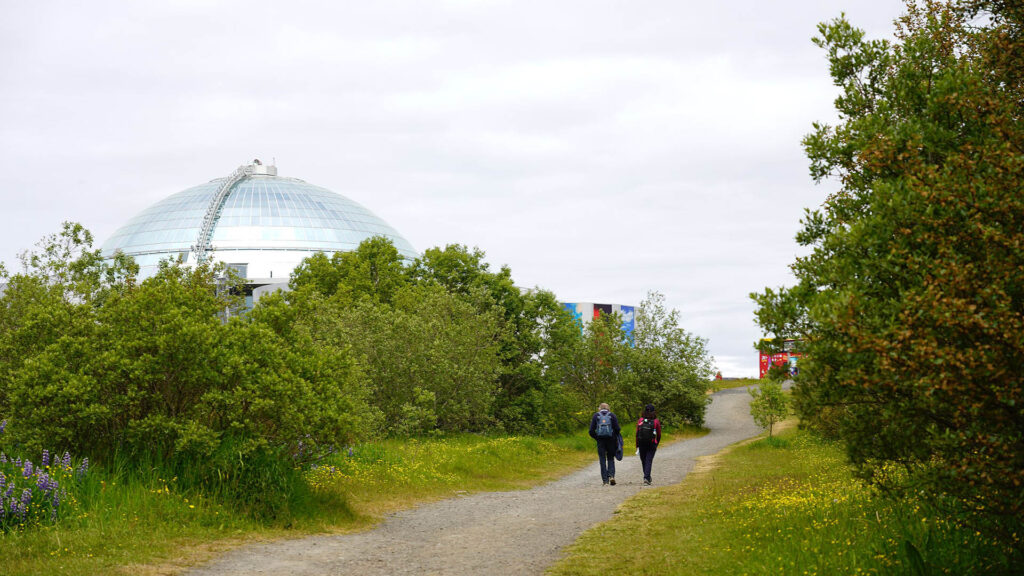
Above and between the tanks is Perlan, a unique building that was opened in 1991. There you will find a museum, a cafe, and a restaurant on the top floor that spins slowly. The most popular are the viewing platforms, but few places in the city offer a better view of the city’s landscape, the canals, and the mountains. Öskjuhlíðin itself is an attractive outdoor area with a diverse natural landscape.
There are also significant geological monuments, one of the densest forests in Reykjavík, and unique human remains from the war years. Öskjuhlíðin is an extremely popular outdoor recreation area due to its proximity to the center of Reykjavík, the university campuses in Vatnsmýrin, the outdoor recreation areas in Nauthólsvík and Fossvogur, and crowded neighborhoods such as Bústaðahverði and Hlíðar.
The Ásatrúarfélag also has its offices in the area.
The Parliamentary Garden
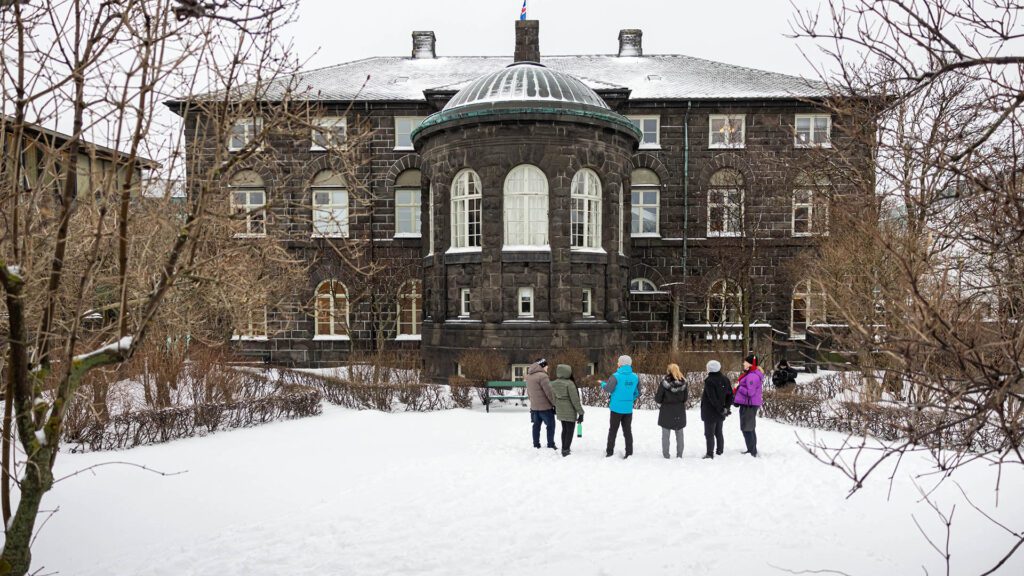
Despite being open to the public, not everyone realizes they can enter the small garden behind the parliamentary building in downtown Reykjavik. You will visit a beautiful little park on our Reykjavik CatWalk tour and the Reykjavik Folklore Tour.
The garden has been open to the public since 1950 but was initially created in 1894. Treasurer Árni Thorsteinsson initiated the creation, and plants were collected inside and outside Iceland. The willow species þingvíðir was imported to the country and is named after the garden.
MP Tryggvi Gunnarsson took care of the garden in the latter part of his life, and a bust of Tryggvi can be found there.
Einarsgarður Park
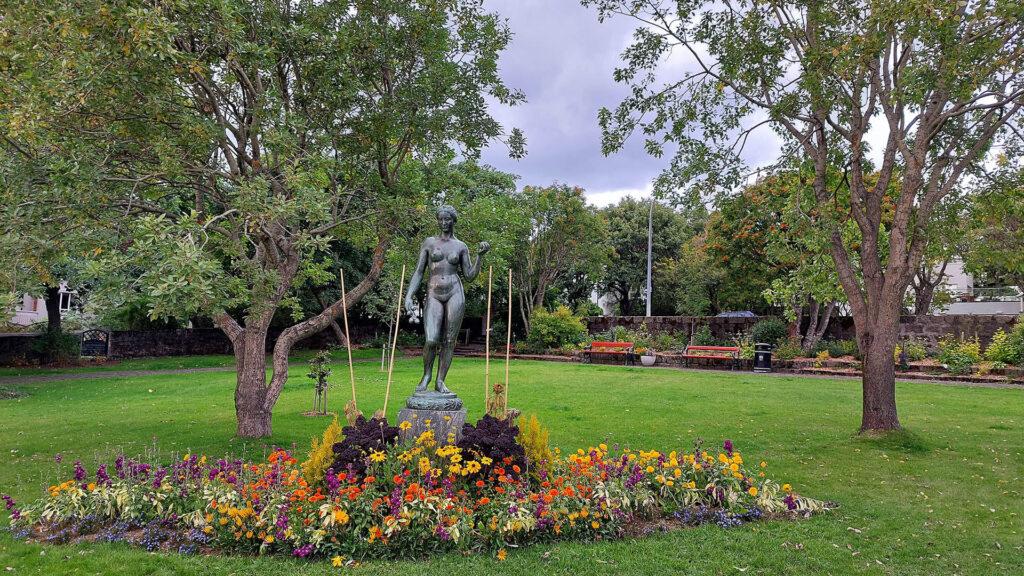
If you take the FlyBus from Keflavík Airport to Reykjavik, you will stop at BSI Bus Station (unless you get a transfer to your hotel). Just a few meters away from the bus station is a small garden called Einarsgarður. Whether walking to your hotel or just strolling around Reykjavik, it is a beautiful place to stop and relax.
Einarsgarður has its roots in the Market Garden, which operated there between 1899 and 1931. The park is named after the horticulturist Einar Helgason.
Elliðaárdalur Valley
This is one of the biggest outdoor areas in Reykjavik. It is also one of the most popular areas for outdoor recreation, games, and sports of various kinds. A diverse environment, landscape, and vegetation characterize the valley. Still, the focal point is the Elliðá rivers, after which the valley is named.
Elliðaár rivers fall from Elliðavatn Lake to the north and west between Breiðholt and Selás- and Ártúnsholt in two branches.
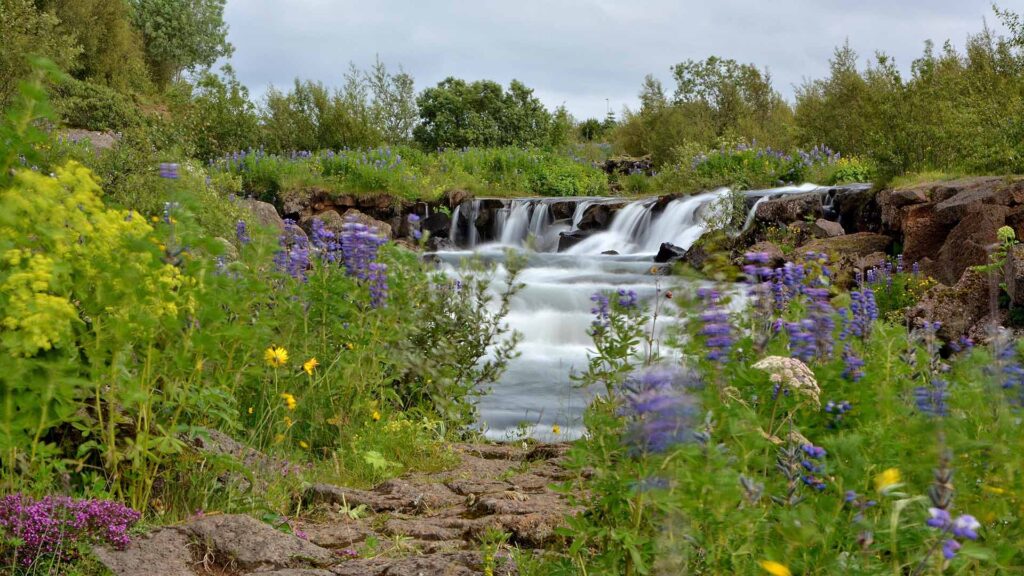
Salmon go up in the rivers, and they are among the most popular salmon fishing rivers in the country’s southwest corner.
The Elliðaár dam was opened in 1921, and it is the largest dam close to the Árbær Open Air Museum.
Many trees have been planted in the valley, but there are also many natural vegetation areas. Bird life is very rich in the valley, and you will also find rabbits there. Rabbits aren’t native to Icelandic nature, and their population has grown since people started letting their pet rabbits free in the area and Öskjuhlíð. Among the exciting places in Elliðaárdalur valley or on its outskirts are Árbær Open Air Museum, The Reykjavik Power Station Museum, and the Icelandic horse stables in Víðidalur.
Reykjavik Park and Zoo
Reykjavik City Council decided in 1986 to build a zoo in Laugardalur Valley. The goal was to educate the general public on Icelandic farm animals, give them a closer look at Icelandic farming practices and strengthen the bond between people and animals. Within one year, six animal-keeping structures were built. A seal pond was dug (there are plans to enlarge it considerably), areas for foxes, minks, and reindeer were formed, and a goat enclosure was set up. It was decided to make space for more than 20 species while letting the Icelandic animals have the spotlight, including farm animals and wild ones.
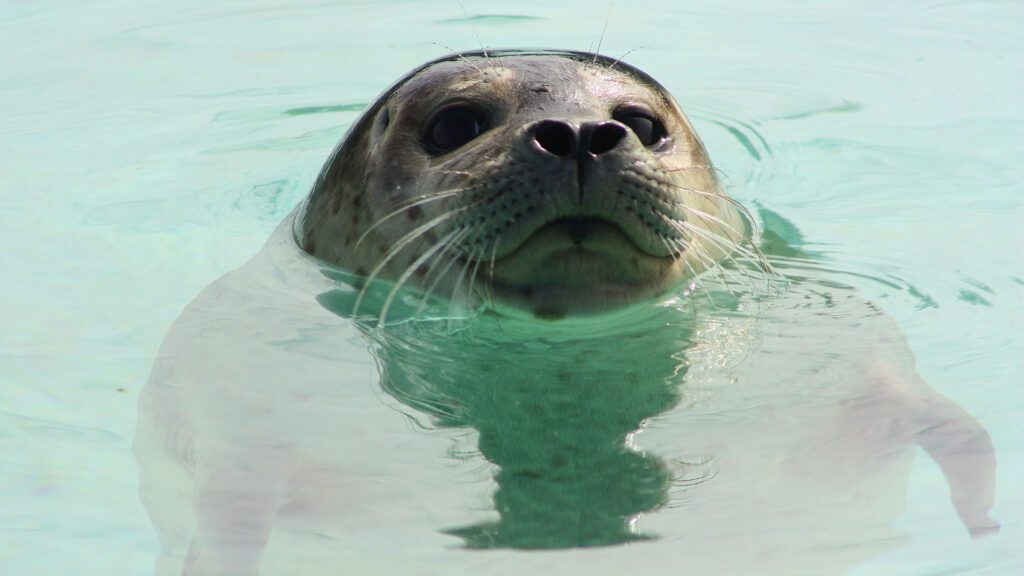
Much has changed since the park and zoo first opened. Exotic animals from all over the world have been added to the original fauna. Those exotic animals include reptiles, amphibians, and insects.
The park (or family park) was opened a few years later. There you will find many kinds of rides, from small and simple to big and exciting ones.
The Reykjavik Botanical Gardens is next to the Park and Zoo, which we recommend you visit in the summer.
Fossvogsbakkar Banks
For geologists and others interested in geology, we recommend you check out Fossvogsbakkar Banks. The area is one of six protected areas in Reykjavík. There are thick marine sediments from the end of the ice age.
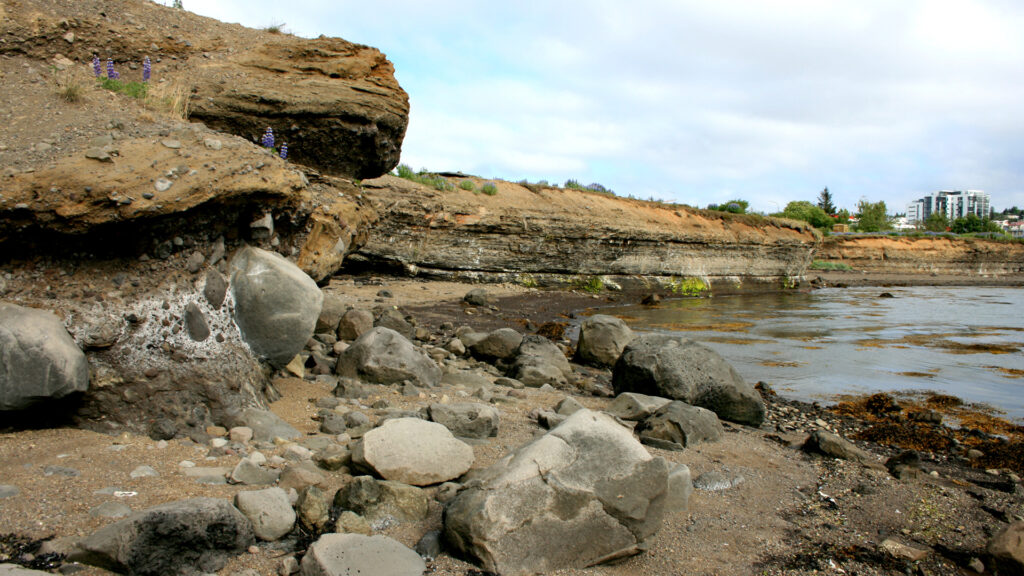
Fossvogsbakkar Banks are in the innermost part of Fossvogur and follow the coastline about 2 km westward to Nauthólsvík. There are fossils on the banks of Fossvogur, but the banks contain marine sediments from the end of the ice age 11,000 years ago.
The sediments contain various fossils, especially mollusc shells. There is also glacial sediment in the layers, which provides information about the history of glacial retreat in the area. Fossvogsbakkar were protected as natural monuments in 1999. Natural monuments are one category of protected natural heritage. They are defined as unique natural phenomena, geological formations, or organic phenomena which stand out from the environment and are a reason to preserve due to beauty, rarity, position in the landscape, scientific value, or other similar reasons.
Geology of the area
The Fossvogsbakkar sedimentary layers lie on top of a shale rock that belongs to the Reykjavík shale, which was formed during volcanic eruptions during the warm periods of the last ice age, probably 100-200 thousand years ago. The bottom layer of the sediments is a glacial rock formed from erosion, indicating the retreat of glaciers. You can see glacial streaks on some lumps in the glacial rock layer. The next layers are marine sediments, mainly fine silt and mudstone layers, and bowl-shaped sandstone in some places. This indicates that the sea level has risen and that there was shallow water in the area.
Nauthólsvík, close to Fossvogsbakkar, is one of the most popular places to hang out when the weather is good in Reykjavik. A part of the ocean by the beach is warmed up, so it is perfect for splashing in and getting that sunny beach feeling.
Hallargarðurinn Park
The Hallargarður Garden is on the other side of Hljómskálagarðurinn and The Pond, but you will visit this garden if you check out our Reykjavik Artwork Walk Around the Pond.
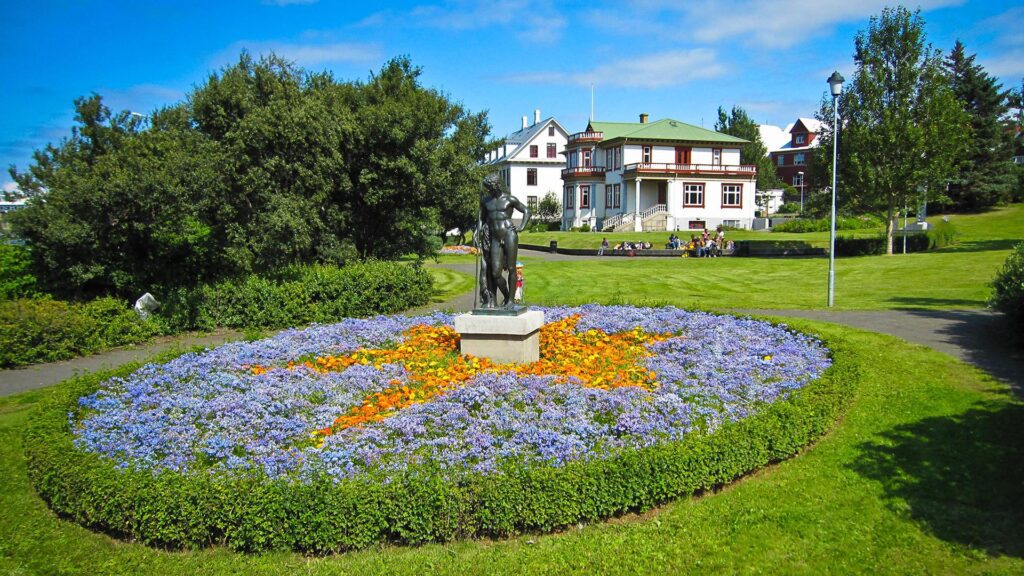
Hallargarðurinn Park at Fríkirkjuvegur is one of the most beautiful public parks in Reykjavík. Flower decorations, works of art, elegant houses, and a view of The Pond from the east give the garden a majestic and warm look. At the same time, it is indirectly connected to Hljómskálagarðurinn Park, which runs diagonally across from Sóleyjargata and Skothúsvegur.
At Hallargarðurinn stands Thor Jenssen’s elegant house, which is a neoclassical wooden house and is considered by many to be one of the most beautiful houses in Reykjavik. The Reykjavik Women’s School and the National Gallery are on the park’s north side.
Heiðmörk Nature Reserve
Literally next to the city is the large outdoor area Heiðmörk. It is a popular place to go hiking, cycling, or just take a walk and enjoy your surroundings. Elliðavatn, from which Elliðaár Rivers flow, is partly in the park.
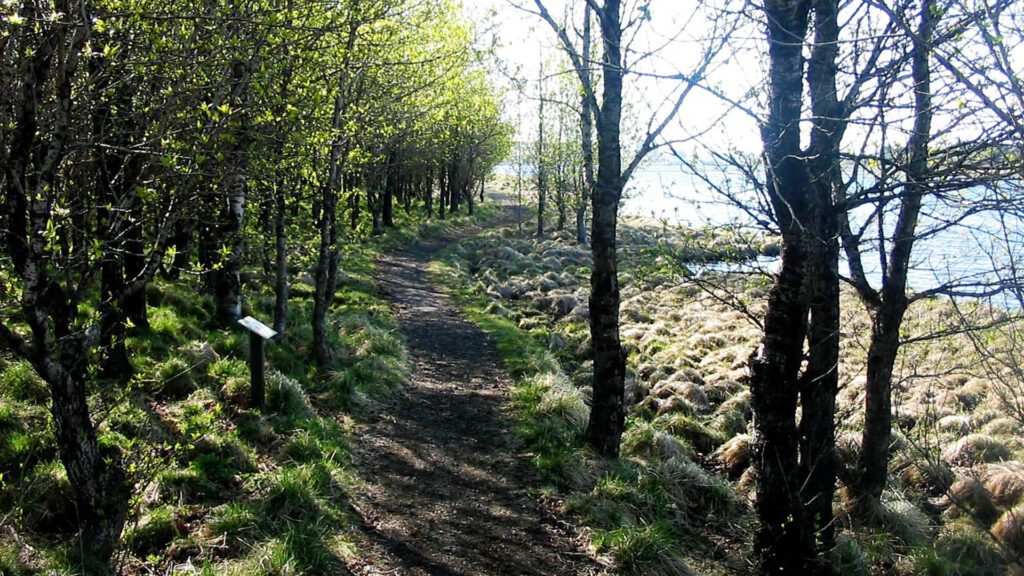
Heiðmörk is the largest outdoor recreation area in the vicinity of Reykjavík. It belongs to the so-called “Green Scarf” surrounding the capital area. The territory of Heiðmörk falls under two other municipalities in addition to Reykjavík: Garðabær and Kópavogur. In Heiðmörk, there is a lot of natural beauty, but much of it has to do with the work Reykjavik Forestry has carried out since the area was opened in 1950.
Heiðmörk is not very hilly, but the highest points are between 150 and 175 meters high. Elliðavatn Lake lies partly within the reserve, and there are several smaller lakes, for example, Helluvatn, Hraunhústjörn, and Myllulækjartjörn. Bugða and Suðurá Rivers are in the northern part of the nature reserve.
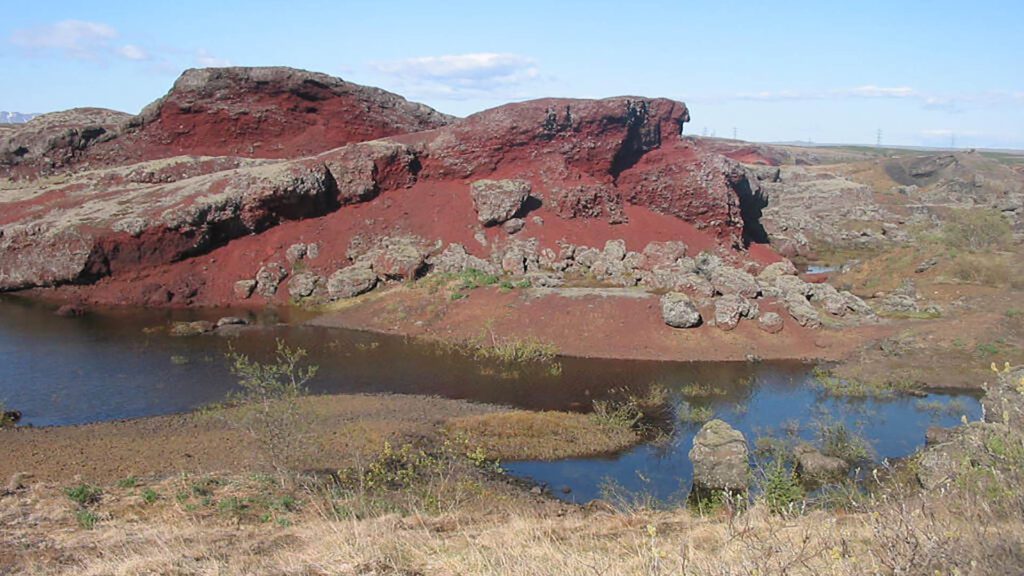
The geology of Heiðmörk reflects the young age of the area and its proximity to active volcanoes. There are quite a few geological formations in and near Heidmörk, such as lava slabs and caves (for example, Maríuhellar). The area’s best-known and most prominent geological formations are Rauðhólar (Red Hills) in Heiðmörk’s northern part. Still, they are pseudo-craters formed during steam explosions when Leita-lava flowed over the Elliðavatn wetland area.
Klambratún Park
About a 10-minute walk from Hlemmur Food Hall, you will find Klambratún Park and Kjarvalsstaðir Art Gallery (a part of the Reykjavik Art Museum). Entry to Reykjavik Art Museum is included in the Reykjavik City Card.
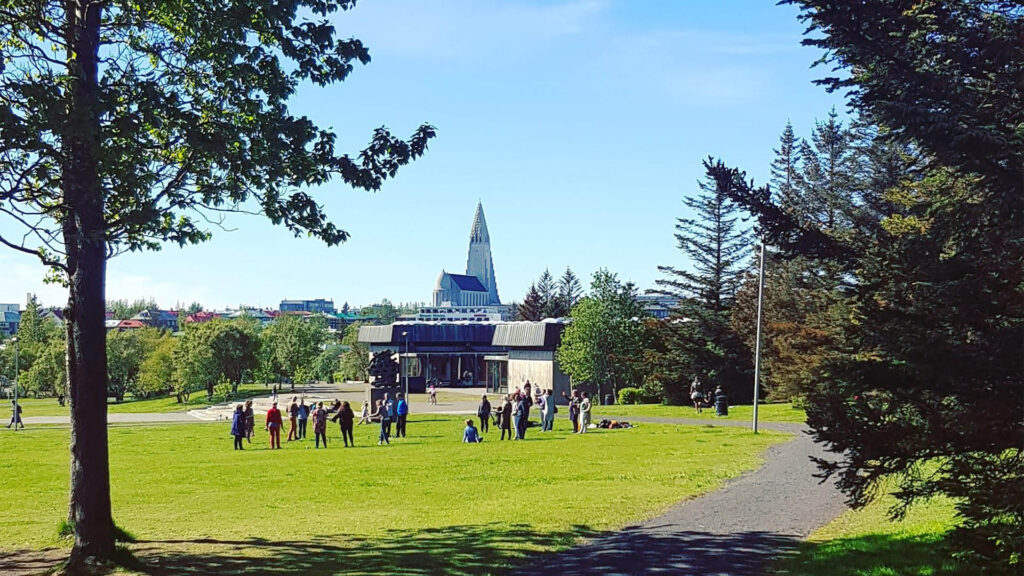
Klambratún is among the largest public parks in Reykjavik and makes a big impression on the Hlíðar district. The park has also been called Miklatún, is between Hringbraut, Rauðarárstígur, Flókagata, and Langahlíð, but the area is named after the farm Klambrar.
Klambratún is one of the largest public parks that was specially designed as part of the city’s master plan, but its design began in the 1960s. Klambratún is divided into large grassy areas, groves of trees, and play and sports areas. It is today a popular outdoor recreation area.
It is possible to play frisbee golf, football, basketball, and beach volleyball. You can also barbeque, check out the various plants and trees, people watch, the art museum, the café and museum shop, and more.
Honorable mentions of parks in Reykjavik
Austurvöllur, Arnarhóll, Mæðragarðurinn, Úlafarsárdalur

